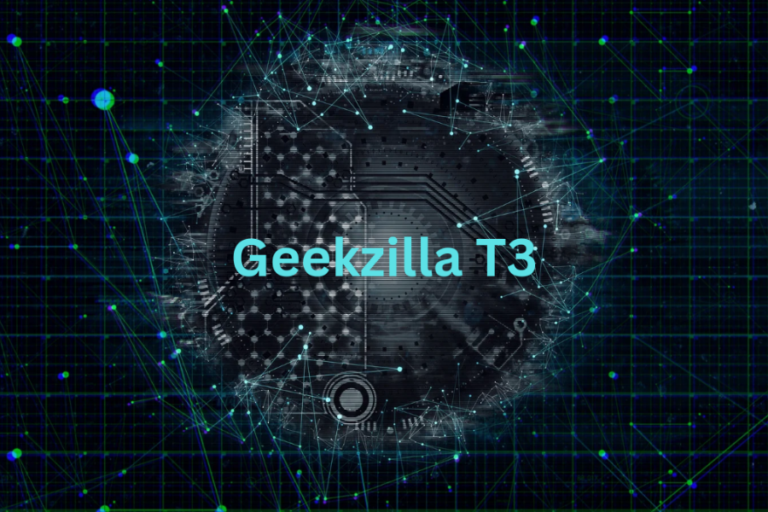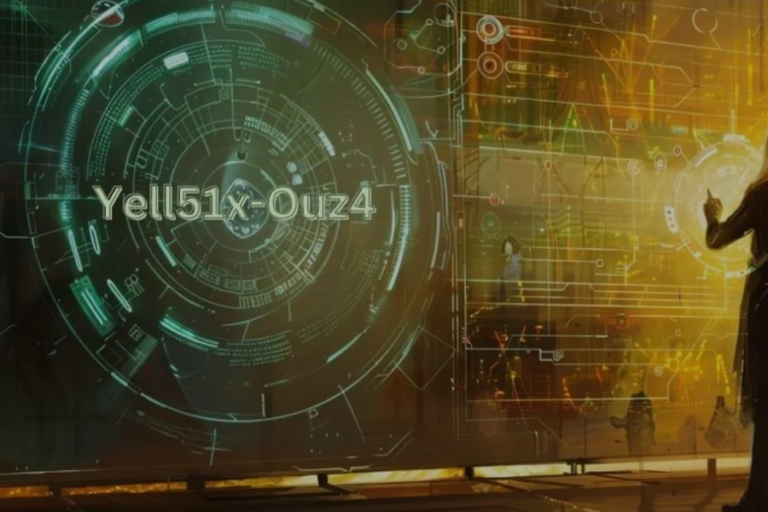“Securing Zillexit Software: Best Practices for Safe Storage and Protection”
How Can Software for Zillexit Be Stored Safely? On the Zilliqa blockchain, users may design and administer decentralised apps with the strong Zillexit software. Zillexit software, like any other powerful technology, has to be kept appropriately and protected from corruption and unauthorised access. This article will go over a few techniques for maintaining Zillexit software safe and secure for use at home or in the workplace.
How to Safely Store Zillexit Software

Zillexit software provides developers with the tools to create and deploy smart contracts, decentralized applications (DApps), and digital assets on Zilliqa’s high-throughput blockchain. Since Zilliqa leverages sharding to boost transaction speeds, Zillexit becomes an essential platform for building scalable DApps that tap into Zilliqa’s powerful infrastructure.
However, Zillexit software contains sensitive information, such as private keys and account credentials, which could lead to significant risks if improperly stored. Therefore, it is crucial to employ best practices for securing Zillexit software. This guide outlines key strategies to ensure the safety of Zillexit software, focusing on:
- Protecting against unauthorized access
- Preventing data corruption
- Ensuring reliable backups
- Maintaining accessibility for authorized users
Securing Zillexit Software from Unauthorized Access
Preventing unauthorized access is paramount when dealing with sensitive software like Zillexit. Below are some essential tips for safeguarding your Zillexit software files and data:
Utilize Strong, Unique Passwords
The foundation of secure software storage is using robust passwords. Each Zillexit software file should be protected with a strong, unique password. Avoid weak, easily guessable passwords such as “password123” or “123456” as they offer little to no protection. Instead, consider the following guidelines for creating strong passwords:
- Use at least 12 characters (more is even better)
- Combine uppercase and lowercase letters
- Include numbers and special symbols
- Steer clear of dictionary words and personal information
For the strongest passwords, use a password manager like LastPass, 1Password, or Dashlane to generate and securely store complex passwords for each Zillexit file and account. Ensure that each account has a unique password to prevent the risk of a breach leading to compromised access across multiple platforms.
Moreover, enabling two-factor authentication (2FA) adds an extra layer of security, requiring both a password and a dynamically generated code from a mobile app or hardware key.
When handling Zillexit private keys, which control access to cryptocurrency wallets and assets, apply the highest level of security. Store these keys on hardware wallets and avoid sharing them under any circumstances.
Regularly audit and update your passwords to stay ahead of evolving security threats. As technology advances, password-cracking techniques become more sophisticated, so it’s wise to change your passwords proactively.
Encrypt Your Storage Drives
Strong passwords alone aren’t enough. It’s also important to encrypt the Zillexit software files themselves to protect against data breaches in the event of device theft or loss. Store your Zillexit files on encrypted USB drives, hard drives, or solid-state drives (SSDs) to ensure they are secure.
If you’re using Windows, BitLocker is a built-in tool for encrypting drives. On Mac, Apple’s FileVault provides native encryption. For a cross-platform solution that works on Windows, Mac, or Linux, consider using VeraCrypt, an open-source disk encryption software.
How to Safely Store and Protect Zillexit Software
Zillexit software is a powerful tool for developers building smart contracts, DApps, and digital assets on Zilliqa’s high-throughput blockchain. Given the sensitive nature of the information stored within Zillexit, such as private keys and account credentials, it’s crucial to take comprehensive measures to store and protect this software. Below are some key strategies for securing Zillexit software effectively.
Full Disk Encryption for Comprehensive Security
Using full disk encryption ensures that all data on a drive is encrypted, making it inaccessible without the correct decryption password. This approach protects against unauthorized access, even if the physical drive is stolen or connected to another machine. The data remains scrambled and unreadable without the encryption key.
In addition to full disk encryption, you can also opt for file or folder encryption to lock down specific Zillexit directories. Remember, it’s essential to secure and back up your encryption keys and passwords, as losing these could result in losing access to your data.
Storing Private Keys on a Hardware Wallet
For the highest level of security, store Zillexit private keys on a hardware wallet rather than on your computer or other drives. Hardware wallets like Trezor and Ledger keep your private keys offline in a tamper-resistant chip, offering strong protection against cyber threats.
When you need to make transactions, the hardware wallet temporarily connects to sign the transaction securely, without exposing the private key itself. This “cold storage” method ensures that your keys are isolated from internet-based threats. Just be sure to back up the recovery seed phrase securely, so you can restore access if the device is lost or damaged.
Enhance Security with Two-Factor Authentication (2FA)
Two-factor authentication (2FA) adds an additional layer of protection beyond passwords. With 2FA enabled, accessing an account requires both a password and a temporary code generated by an authenticator app or a security key.
These codes are randomly generated and expire quickly, which means that even if a password is compromised, an attacker would also need access to your 2FA device to log in. Implement 2FA on all Zillexit-related accounts and software that support it. Popular 2FA tools include Google Authenticator, Authy, and YubiKeys for physical security.
It’s important to keep 2FA credentials as secure as passwords—never share them, and require 2FA from all team members working on Zillexit projects for added security.
Safeguarding Zillexit Software from Data Corruption
Preventing unauthorized access is critical, but so is protecting your data from corruption or accidental loss. Here are some best practices to follow:
Implement Version Control
Although the original site doesn’t specifically mention version control for Zillexit, it’s a best practice in software development. Tools like Git and GitHub help manage code changes efficiently and allow you to roll back to previous versions if bugs or issues arise.
Automate Your Backups
While the original content doesn’t discuss backups, automating regular backups is essential to avoid data loss. Cloud services like AWS Backup, pCloud, Dropbox, Sync.com, CrashPlan, Backblaze, or tools like Restic can help you schedule and manage backups of your Zillexit files and databases.
Ensure Redundancy and Mirroring
Redundancy, though not mentioned in the original content, is a vital strategy for improving system uptime and disaster recovery. By mirroring Zillexit data across geographically distributed servers, you can minimize downtime and ensure continuous availability of critical parts of the system.
Verify Checksum Integrity
Even though the original content doesn’t mention it, verifying the checksums of downloaded Zillexit software is a good practice. This ensures that the files haven’t been altered or corrupted. Zillexit should publish checksums for its installers, and users should validate them before installation.
Backup and Secure Private Keys
Backing up private keys is essential for maintaining access to your Zillexit assets. While the original site doesn’t mention this, it’s critical to create encrypted backups of your private keys and wallet seed phrases. These should be stored securely in multiple locations. You might also consider using multisig wallets, which can add an extra layer of security and recovery options.
Document Procedures and Processes
Although not explicitly stated on the site, documenting your procedures for access, account recovery, and disaster management is highly beneficial. Clear documentation provides guidance in case primary administrators are unavailable and ensures a smooth transfer of responsibilities as your team evolves.
Safeguarding Zillexit Software: Best Practices for Secure Storage and Accessibility
Zillexit software is a vital tool for developers working on the Zilliqa blockchain, enabling the creation of smart contracts, DApps, and digital assets. Given its importance, it’s crucial to ensure Zillexit is stored securely while still being accessible to authorized users when needed. Below are key strategies to achieve this balance.
Validating Backups with Test Restores
While it’s great to regularly back up Zillexit, it’s equally important to test these backups by restoring them in a controlled environment. This practice ensures that the backups are not only intact but also functional. By regularly performing test restores, you can identify and fix any issues with the backup process before they turn into major problems during an actual disaster recovery scenario.
Air-Gapped Backups for Extra Protection
For an added layer of security, consider using air-gapped backups. These are backups stored entirely offline, disconnected from any network or internet access. Air-gapped backups protect against cyber threats like malware and ransomware by ensuring that there is no digital path for attackers to reach them. They serve as a reliable last line of defense in case other security measures fail.
Establishing Reliable Backup Processes for Zillexit Software
To prevent the permanent loss of data, it’s essential to implement a robust backup strategy for Zillexit software. Here are some key practices to consider:
Backup the Entire Zillexit Directory
When backing up Zillexit, make sure to include the entire installation directory—not just a few select files. The directory contains vital configurations, dependencies, and libraries necessary for the software to function properly. Partial backups could lead to missing components or errors when restoring, so it’s crucial to back up the entire directory structure. This approach preserves the original file paths, permissions, and organization, ensuring a smooth and accurate restore process.
Utilize Both Offline and Offsite Backups
For a comprehensive backup strategy, maintain both offline and offsite backups. Offline backups, such as those on external hard drives, offer quick access for restores during local emergencies. However, they remain vulnerable to physical threats like theft or natural disasters. Offsite backups, stored in remote cloud services, provide resilience against site-wide failures like fires or floods. By combining the speed of local restores with the durability of offsite backups, you can achieve comprehensive data protection.
Secure Backup of Private Keys
Given the crypto-centric nature of Zillexit, backing up private keys is absolutely essential. These keys control access to user funds, and without backups, their loss could be irreversible. Store encrypted backups of private keys and wallet seed phrases in multiple secure locations. Multi-factor authentication and hardware wallets further enhance the security of these backups. Regularly test the restoration of wallets from these backups to ensure they are both valid and complete.
Schedule Regular Backups
One-time backups are not enough. Implement a recurring schedule of automated backups to capture ongoing changes to Zillexit data. Daily or weekly backups can help ensure that new and modified files are consistently protected. The frequency of backups should match the volatility and importance of the data, with more frequent backups for critical information. Always verify that these scheduled backups are successfully completed by testing occasional restores.
Regular Test Restores
It’s not enough to just create backups—you must also regularly test them to ensure they work. Perform test restores in an isolated environment to confirm that your backup files and databases can be successfully recovered. This process will help you spot any potential issues with the backup, such as corrupt files, before you actually need to restore data in an emergency. Regularly testing restores builds confidence in your disaster recovery plan and helps refine your backup strategy.
Ensuring Authorized Access to Zillexit Software
While it’s vital to protect Zillexit from unauthorized access, it’s also crucial to ensure that authorized users can access the software when needed:
Use a Centralized Password Manager
For teams collaborating on Zillexit, a centralized password manager is invaluable. Tools like LastPass or 1Password allow secure sharing of passwords among team members based on their roles and responsibilities. For instance, developers might need access to development environment credentials, while operations engineers might need production passwords. A centralized password manager also encourages the use of strong, unique passwords across all systems, and can enforce regular password rotations.
Implement Multi-Signature (Multisig) Wallets
For added security, consider using multi-signature (multisig) wallets, which require multiple approvals before transactions can be executed. This setup prevents a single individual from having complete control over the funds, reducing the risk of misuse. Multisig wallets should reflect the structure of your team, requiring approvals from key members like engineers and legal advisors. This approach not only enhances security but also protects against potential disruptions if a signer is unavailable.
Store Keys in a Secure Vault
For enterprise-level security, store Zillexit private keys in a Hardware Security Module (HSM) vault, such as Azure Key Vault. These vaults provide stringent access controls and tamper-resistant protection against both physical and cyber threats. Vaulted keys can be securely managed and used in scalable Zillexit deployments without exposing them to unnecessary risks. This setup also supports compliance with regulatory requirements through strict access policies and activity logging.
Secure Mnemonic Backup Phrases
Mnemonic backup phrases, typically consisting of 12-24 words, are crucial for recovering lost wallets or accounts. To protect these phrases, store them in multiple durable formats, such as metal plates or acid-free paper, and consider splitting them into parts stored in different secure locations. Treat these phrases with the same level of care as private keys, as anyone with access to the full mnemonic can take over accounts.
Document and Update Procedures
Thorough documentation of your Zillexit operational and recovery procedures is essential, especially when key staff members are unavailable. Detailed guides for both routine tasks, like updates, and critical procedures, like disaster recovery, ensure that less experienced team members can manage Zillexit effectively. Regularly update these documents to reflect any changes in your system configuration, and review them annually to ensure they remain accurate and relevant.
Conclusion
Protecting Zillexit software involves more than just securing it from unauthorized access. It requires a comprehensive approach that includes preventing data corruption, maintaining reliable backups, and ensuring that authorized users can easily access the software when needed. By employing strategies like encryption, hardware wallets, version control, password management, multisig wallets, and both onsite and offsite backups, you can safeguard Zillexit software against threats while maintaining the necessary accessibility for authorized users.
FAQs About Zillexit Software Security and Backup
1. What is the importance of using a hardware wallet with Zillexit software, and how does it work?
A hardware wallet provides enhanced security by keeping your Zillexit private keys offline and away from potential online threats. These wallets store your keys in a secure, tamper-resistant chip. When you need to sign a transaction, the hardware wallet connects to your computer, signs the transaction securely, and then disconnects, ensuring your keys remain safe.
2. How does full disk encryption protect Zillexit software, and what should I consider when implementing it?
Full disk encryption scrambles all data on your drive, making it unreadable without the decryption key. This is crucial for protecting Zillexit software, as it prevents unauthorized access if your device is lost or stolen. When implementing encryption, ensure that your decryption key is stored securely, and consider using software that provides strong, widely-recognized encryption standards.
3. What should I look for in a password manager when securing Zillexit-related credentials?
When choosing a password manager for Zillexit, prioritize features like strong encryption, secure password sharing, and multi-factor authentication (MFA). The manager should also offer automated password generation and regular security audits. Ensure it allows for role-based access control if you’re working in a team, so you can manage who has access to which passwords.
4. How can version control systems enhance the security and reliability of Zillexit software?
Version control systems like Git track all changes made to Zillexit software, allowing you to roll back to previous versions in case of errors or unauthorized modifications. This provides a safeguard against data corruption and accidental overwrites, ensuring that you always have access to a stable version of your software.
5. Why is encrypting Zillexit files on external drives important, and how can I do it effectively?
Encrypting Zillexit files on external drives is crucial to protect sensitive data from unauthorized access, especially if the drive is lost or stolen. Use software like VeraCrypt or BitLocker to encrypt your external drives. Ensure that your encryption passwords are strong, unique, and securely backed up in a password manager or another secure location.
Keep an eye for more news & updates on American Breaking!






